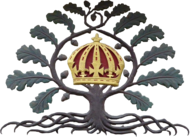This article needs additional citations for verification. (December 2022) |
The Earl of Bute | |
|---|---|
 Portrait by Joshua Reynolds, 1773 | |
| Prime Minister of Great Britain | |
| In office 26 May 1762 – 8 April 1763 | |
| Monarch | George III |
| Preceded by | The Duke of Newcastle |
| Succeeded by | George Grenville |
| Leader of the House of Lords | |
| In office 26 May 1762 – 8 April 1763 | |
| Monarch | George III |
| Prime Minister | Himself |
| Preceded by | The Duke of Newcastle |
| Succeeded by | Unknown |
| Secretary of State for the Northern Department | |
| In office 25 March 1761 – 27 May 1762 | |
| Monarch | George III |
| Prime Minister | The Duke of Newcastle |
| Preceded by | The Earl of Holdernesse |
| Succeeded by | George Grenville |
| Personal details | |
| Born | John Stuart 25 May 1713 Edinburgh, Scotland |
| Died | 10 March 1792 (aged 78) Westminster, England |
| Resting place | St Mary's Chapel, Rothesay, Isle of Bute, Scotland |
| Nationality |
|
| Political party | Tory |
| Spouse | |
| Children | 11; including John, James, Charles, William and Louisa |
| Parent |
|
| Alma mater | |
| Signature |  |
| Part of the Politics series on |
| Toryism |
|---|
 |
John Stuart, 3rd Earl of Bute KG PC FSA Scot (/bjuːt/; 25 May 1713 – 10 March 1792), styled Lord Mount Stuart between 1713 and 1723, was a British nobleman who served as the Prime Minister of Great Britain from 1762 to 1763 under King George III. He became the first Tory to hold the position and was arguably the last important royal favourite in British politics. He was the first prime minister from Scotland following the Acts of Union in 1707. He was also elected as the first president of the Society of Antiquaries of Scotland when it was founded in 1780.